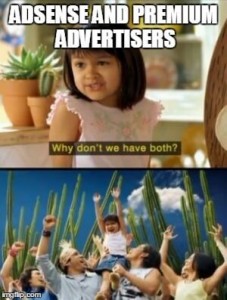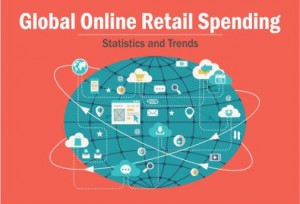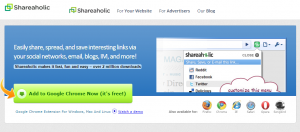Bing never fails to impress me with their well-executed events. From sumo-wrestling competitions to character drawings and ice cream sundae buffets, the Bing team tends to outdo themselves time after time.
Bing Ads Connect, which took place in Cambridge, MA last Friday, wasn’t quite the sumo-wrestling, open-bar type atmosphere with the early morning start and 2:00 PM close; yet with the sleek office setting, endless array of snacks, and quality line-up of speakers, I was once again impressed by the Bing events team. I left with tons of insight, which I’m looking forward to sharing with you all. Here are the 5 most fascinating things I learned at Bing Ads Connect, which all paid search marketers need to pay attention to:
#1: Searchers Spend 24% More on Bing – Jorge Gutierrez, Regional Sales Director at Microsoft
Jorge shared a plethora of fascinating Bing user stats, but what really intrigued me is that Bing searchers tend to purchase more expensive items than those on Google or Gemini. Jorge explained that the Bing audience tends to be an older and wealthier demographic of searchers.

TAKEAWAY: 1/3 of the marketplace is on Bing and there are 99 million searchers you can’t reach on Google. If you haven’t expanded to Bing yet, you should, especially if you are targeting a wealthier demographic.
#2: When Switching from Product Ads to Shopping Campaigns, Keep Product Ads Running Until 80% of Impressions Go to Shopping – Purna Virji, Bing Ads Client Development and Training Specialist
Not only does Purna speak 6 languages, but she’s been in the world of inbound marketing for over a decade, and now serves as a Bing Evangelist traveling from conference to conference and sharing her wealth of knowledge with other marketers. She’s also become a good friend of ours at WordStream.
Purna shared some super actionable paid search tips, including some specifically critical for retail marketers during the holidays. When Google made the shift from product ads to shopping campaigns, it only made sense for Bing to follow suit. Not only are shopping campaigns easier to set-up and run, but they’ve proven to be more effective. Purna shared a case study where impressions and clicks more than doubled when switching from product ads to shopping campaigns on Bing.
However, retailers need to tread lightly when making the shift, especially during Q4 when sales tend to be at an all-time high. Purna recommends keeping product ads running during the transition for 24-48 hours. Once you’ve seen that over 80% of impressions are going to shopping then it’s safe to turn off product ads and start scoring even more sales with shopping ads.

#3: There Are 56% More Untapped Conversions if You’re Not Using Broad Match – Purna Virji
PPC advertisers tend to be wary about using broad match. Perhaps you had a bad past experience where you ran a list of broad keywords while failing to set up negatives, and ended up wasting 50% of your PPC budget on irrelevant clicks. We’ve all been there, but Purna explained that broad is not the enemy. Rather using broad match opens up your campaigns to many more opportunities, the key is using it correctly with the appropriate negative keywords, and careful monitoring of the search query report.
According to Purna, 30% of daily searches are new and this percentage increases near the holidays! If you’re restricting your ads from showing for these unique queries by using phrase and exact match types only, then you’re missing out on a large audience. Purna explained that you could be limiting impressions, clicks, and conversions by more than half if you steer away from using broach match.

TAKEAWAY: Use broad match keywords in partnership with exact and phrase to expand your reach and gain more conversions. Just ensure you’re setting up the proper negatives and monitoring for irrelevant searches to block irrelevant clicks from occurring.
#4 When Creating Local Ads Consider All of Your Location Profiles – Matt Van Wagner, President and Founder of Find Me Faster
Guest speaker Matt Van Wagner addressed the challenges of finding local shoppers. The concept seems easy. Let’s say you own a hardware storefront on Newbury Street in Boston’s Back Bay – in theory you would simply set up radius targeting within a few miles of your store to capture nearby shoppers, but what about the people searching on a road trip from New Jersey for a hardware store in Boston, like yours? And what about the people who live in the area, but are searching for a hardware store in a nearby suburb?
Van Wagner explained how you need to distinguish your searchers’ location profiles to craft the most relevant ad text. Are they searching from the inside looking inside, from the inside looking outside, or from the outside looking inside? There are multiple factors to determine before crafting local ads; in addition to the searchers’ location profiles, consider the typical search queries that go along with these profiles and keyword categories before crafting ad text.

#5: Bidding on Branded Terms Yields a 36% Increase in Traffic – Itir Aloba, Premier Insights Team Lead at Microsoft
Why bid on branded terms when you’re likely to show up organically? Because your competitors are bidding on your brand and stealing your business. Aside from protecting your brand from greedy competitors, bidding on branded terms helps you control your messaging, capture ready-to-convert leads (you can assume this since they’re already familiar with your brand), dominate the SERPs at all times, and capture 36% more traffic, according to a Bing analysis.
TAKEAWAY: Bid on branded terms!
Thanks again to the Bing team for a wonderful, knowledge-packed day.
Digital & Social Articles on Business 2 Community(236)
Report Post







